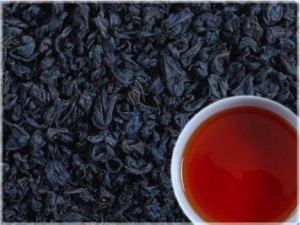02 Sep 2019

There is no universal grading system for tea. For example, in China, tea is usually classified by number, with 1 being the highest grade, followed by 7, 8, 9, etc., based on the type of leaf, the shape of the leaf and how specific the manufacturing process has been. In Taiwan and Japan, tea grades range from highest to lowest as follows: Extra Choicest, Choicest, Choice, Finest, Fine, Good Medium, Medium, Good Common, Common, Nubs, down to Dust and Fanning.
The most common grading terms used by tea producers in other parts of the world, like India, Sri Lanka, Africa, Argentina, Indonesia, Malaysia and Europe are:
OP: Orange Pekoe
FOP: Flowery Orange Pekoe
GFOP: Golden Flowery Orange Pekoe
TGFOP: Tippy Golden Flowery Orange Pekoe
TGFOP 1: Tippy Golden Flowery Orange Pekoe One
FTGFOP: Finest Tippy Golden Flowery Orange Pekoe
FTGFOP 1: Finest Tippy Golden Flowery Orange Pekoe one
SFTGFOP: Special Finest Tippy Golden Flowery Orange Pekoe
SFTGFOP 1: Special Finest Tippy Golden Flowery Orange Pekoe 1
For broken teas, the letter “B” is added to the grade, such as BOP (Broken Orange Pekoe), FBOP, GBOP, TGBOP, etc.
For smaller grades used in teabags, the grades fanning and dust are used, such as: OF, OPF, FBOPF, FD, GD
It is important to note that tea grades are determined by the tea producer, and can sometimes vary from one to another. So, requesting a sample prior to purchasing is a good way to ensure that you are getting the grade of tea that you want.
So, bringing it back to the main topic of this article, why is tea grading important? Because learning how to read these acronyms and what they mean tells you something about the tea, and is especially helpful in determining the flavor profile of the tea. Smaller-sized tea leaves produce a stronger flavor than larger whole leaves, so if you are looking for a black tea to compliment your breakfast, you may want to choose a broken tea. However, if you are looking for a more subtle, sweeter tea, a higher grade tea with more tips will do the trick, teas with the letters F or G in them. F stands for flowery, meaning the tea has tips, and G stands for Golden which means there are an even higher amount of tips in the tea.
Tea leaf grades help us understand what the tea will look like, what to expect in terms of body, aroma, sweetness, etc. This information is helpful when buying tea for personal use as well as starting a tea business. Quite often tea is purchased from a catalog, where you will be provided with a list of teas that the vendor carries. The acronyms, terms and grades discussed above will help you get a general idea of what the tea is like, but it’s always best to request a sample and cup the tea before purchasing.
Source: WorldTeaNews.com
© Inacom. All Rights Reserved.